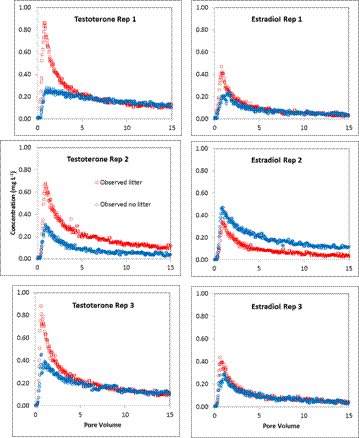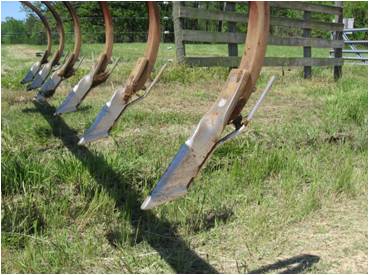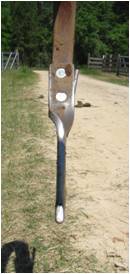Grantee Research Project Results
Final Report: Fate of Hormones in Waste from Concentrated Broiler Feeding Operations
EPA Grant Number: R833419Title: Fate of Hormones in Waste from Concentrated Broiler Feeding Operations
Investigators: Cabrera, Miguel L. , Hassan, Sayed , Fairchild, Brian D. , Hartel, Peter G. , Kissel, David E. , Radcliffe, David E. , Vencill, William K. , Endale, Dinku
Institution: University of Georgia , USDA
EPA Project Officer: Aja, Hayley
Project Period: July 1, 2007 through June 30, 2010 (Extended to June 30, 2012)
Project Amount: $695,620
RFA: Fate and Effects of Hormones in Waste from Concentrated Animal Feeding Operations (CAFOS) (2006) RFA Text | Recipients Lists
Research Category: Endocrine Disruptors , Human Health , Safer Chemicals
Objective:
Each year, the U.S. broiler industry generates about 13 million Mg of broiler litter, a mixture mostly of bird excreta and bedding material. Broiler litter is typically applied to grasslands as fertilizer because it contains nutrients such as nitrogen, phosphorus, and potassium. In addition to plant nutrients, however, broiler litter also contains the sex hormones estrone, 17β-estradiol and testosterone, which may be transported in surface runoff and contaminate surface waters. Information on factors that affect the concentration of these sex hormones in broiler litter, their fate in soil, and their transport in surface runoff is limited.
Summary/Accomplishments (Outputs/Outcomes):
Objective a) Determine concentrations of estrone, 17β-estradiol, and testosterone in different classes of broiler litter.



Conclusions:
- Cake cleanout would pose a greater risk of contaminating surface runoff with hormones than full cleanout, and in untreated bedding, cake cleanout from three flocks would pose a greater risk of surface runoff contamination than cake cleanout from one flock.
- Stacking broiler litter for 4 to 8 weeks is likely to reduce (although not eliminate) estradiol and testosterone concentrations.
- The percentage of hormone decomposition when surface applied to soil is lower for estradiol (about 10%) than for testosterone (about 40%).
- The effect of temperature and water content on decomposition of estradiol and testosterone applied to the soil surface is relatively small.
- Increasing temperature from 10 to 30oC and increasing water content from permanent wilting point (-1.5 MPa) to field capacity (-0.03 MPa) may decrease the amount of estradiol and testosterone extractable in water and increase the amounts associated with soil organic fractions. These results suggest that better conditions for mineralization also may lead to less water-extractable hormones and more incorporation of remaining sex hormones into soil organic matter (humification).
- The incorporation of hormones into soil organic fractions increases with time after application.
- Sorption of estradiol and testosterone by soil decreases when both hormones are added together when compared to hormones added separately.
- The organic matter present in broiler litter can affect sorption of estradiol and testosterone by soil.
- Broiler litter applied on the soil surface may contaminate surface runoff with estradiol and testosterone for at least 4 weeks following application.
- Aerating grasslands with ammonia knives may reduce concentrations of estradiol and testosterone in surface runoff for runoff events that occur soon after litter application, but is not likely to have an effect in later runoff events.
References:
Franklin, D.H., M.L. Cabrera, L.T. West, V.H. Calvert, and J.A. Rema. 2007. Aerating grasslands: effects on runoff and phosphorus losses from applied broiler litter. J. Environ. Qual. 36:208-215.
Journal Articles on this Report : 1 Displayed | Download in RIS Format
| Other project views: | All 9 publications | 1 publications in selected types | All 1 journal articles |
|---|
| Type | Citation | ||
|---|---|---|---|
|
|
Bera M, Radcliffe DE, Cabrera ML, Vencill WK, Thompson A, Hassan S. 17-β estradiol and testosterone sorption in soil with and without poultry litter. Journal of Environmental Quality 2011;40(6):1983-1990. |
R833419 (2011) R833419 (Final) |
Exit |
Supplemental Keywords:
broiler litter, mineralization, hormones, aeration, grasslands, sorption, surface runoff, stacking, Health, RFA, Scientific Discipline, Ecological Risk Assessment, Environmental Chemistry, Endocrine Disruptors - Human Health, endocrine disruptors, Endocrine Disruptors - Environmental Exposure & Risk, Ecology and Ecosystems, concentrated animal feeding operations, EDCs, animal feeding operations, endocrine disrupting chemicals, CAFOsProgress and Final Reports:
Original AbstractThe perspectives, information and conclusions conveyed in research project abstracts, progress reports, final reports, journal abstracts and journal publications convey the viewpoints of the principal investigator and may not represent the views and policies of ORD and EPA. Conclusions drawn by the principal investigators have not been reviewed by the Agency.
Project Research Results
- 2011 Progress Report
- 2010 Progress Report
- 2009 Progress Report
- 2008 Progress Report
- Original Abstract
1 journal articles for this project
